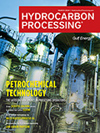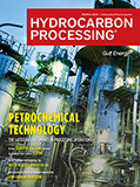Process Control
Corrosion: Maintaining profitability with opportunity crudes while mitigating naphthenic acid corrosion
Refiners are asked to produce products within ever tighter margins in a changing industry.
Mitigation actions to prevent vibration during factory tests of SAGD boiler feedwater pumps
The most vital information on the condition of boiler feedwater (BFW) pumps is vibration.
Using ANN modeling to predict the melt flow index in real time
Controlling polymer quality during manufacturing is a significant challenge due to the cost, maintenance and reliability of online measurements of final product quality.
Digital: Digital twin for refinery production optimization
Digitalization is fundamental to Repsol’s strategy for the future.
Editorial Comment: In pursuit of operational excellence: A thank you from Hydrocarbon Processing
In late September, <i>Hydrocarbon Processing</i> hosted the International Refining and Petrochemical Conference (IRPC).
Hydrocarbon Processing 2021 Awards WINNERS
<i>Hydrocarbon Processing</i>, the downstream processing sector’s leading technical publication for nearly 100 yr, has announced the winners for its fifth annual <i>HP</i> Awards, which celebrate innovative technologies and people that have been instrumental in improving facility operations over the past year.
The path forward for process automation: Multivariable control as core competency
In process automation, multivariable control has always been considered an area of specialization and a luxury for those companies with sufficient scale and resources to justify its high costs of ownership.
Manage integrated operating limits
For safe and smooth operations of petrochemical and refining facilities, it is vital that they are continuously run within defined operating limits, ensuring high reliability of the plant and equipment and delivering per rated capacities throughout their lifecycle.
Hydrocarbon Processing 2021 Awards FINALISTS
<i>Hydrocarbon Processing</I>, the downstream processing sector’s leading technical publication for nearly 100 yr, has announced the finalists for its fifth annual <i>HP</i> Awards, which celebrate innovative technologies and people that have been instrumental in improving facility operations over the past year.
Cybersecurity: How HPI companies can protect against ransomware and other cyber threats
Ransomware has become an epidemic, and critical infrastructure is in the crosshairs.

- Brazil's Timbro to export 40% more sugar, enter ethanol market in 2024 4/24
- LG Chem denies report it will merge naphtha cracker business with Lotte Chemical 4/24
- Crude and gasoline stocks fell, distillate stocks rose last week, EIA says 4/24
- INERATEC secures state-of-the-art catalysts from Sasol for the production of sustainable e-fuels 4/24
- JX to join forces with Sumitomo at large scale SAF/BECCS project in Louisiana (U.S.) 4/24
- WestJet buys first Canadian-supplied SAF by Shell Aviation 4/23




